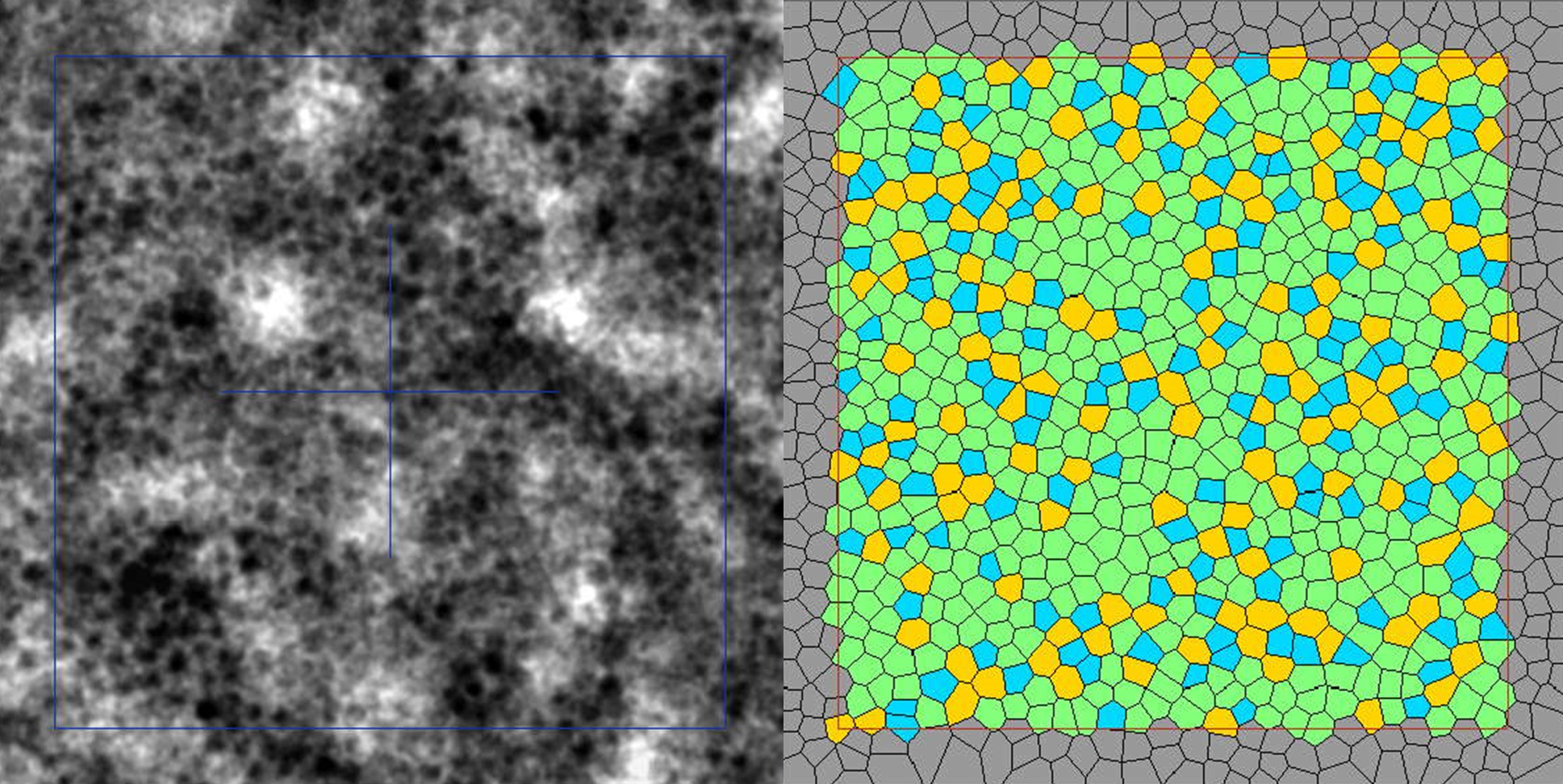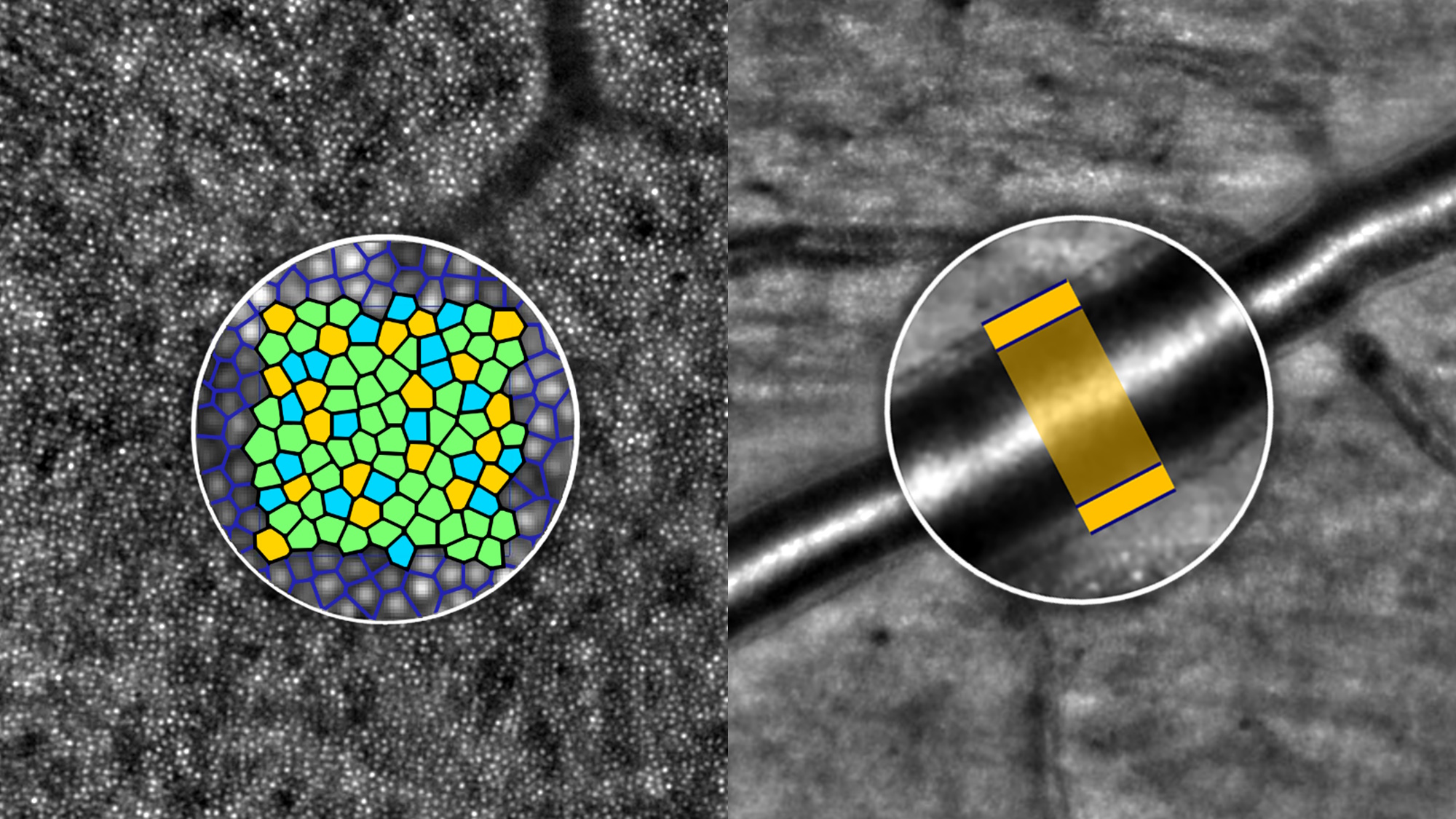Clinical imaging of the RPE cell mosaic
Gocho et al. provide solid evidence for RPE cell imaging with the rtx1-TFI transscleral illumination module, by comparing this new modality with a well-established AF-AOSLO technique.
AMD: prediction of progression to atrophic stages
Shahabi et al. characterize AMD phenotypes at the photoreceptor level in 48 eyes with early-onset macular degeneration. Additionally, two follow-up studies address the role of hyporeflective clumps (HRCs) in AMD progression. Paques et al. show that HRCs propagate centrifugally – ahead of atrophic area borders – during GA progression. Holmes et al. observe an increased clustering of HRCs at baseline in eyes that progress to complete atrophy later in the study. These findings suggest that both the distribution and dynamic properties of HRCs may provide valuable biomarkers in AMD.
Diabetes: revealing previously undetectable structural and functional changes
Muthiah et al. report changes in the photoreceptor mosaic at all stages of diabetic macular ischemia, and associations between these changes and functional findings. Bernardes et al. implement and validate a new technique using rtx1 to assess the neurovascular coupling response in diabetic patients.
Inherited retinal diseases: phenotyping at the cellular and microvascular levels
Van Haute et al. use rtx1 to characterize the phenotype of MFSD8-related retinal disease, for the first time at the photoreceptor level. Samelska et al. find significant differences in microvascular structure between healthy subjects and patients with retinal dystrophies, including Stargardt, cone dystrophy and cone-rod dystrophy. Ota et al. elucidate the attenuation of retinal arterioles observed in fundus images in retinitis pigmentosa, by analyzing the vessel lumen and wall structure in rtx1 images.
rtx1 as a tool to assess vitroretinal surgery outcomes
Mihalache et al. evaluate photoreceptors with rtx1 in 41 cases of postoperative retinal detachment and show statistically significant associations between cone mosaic metrics and clinical visual outcomes.
Photoreceptor analysis enhanced with AI
Andrade de Jesus et al. present a deep-learning model for automated segmentation of photoreceptors in rtx1 images and demonstrate that AI detection performs outperforms expert human graders.


